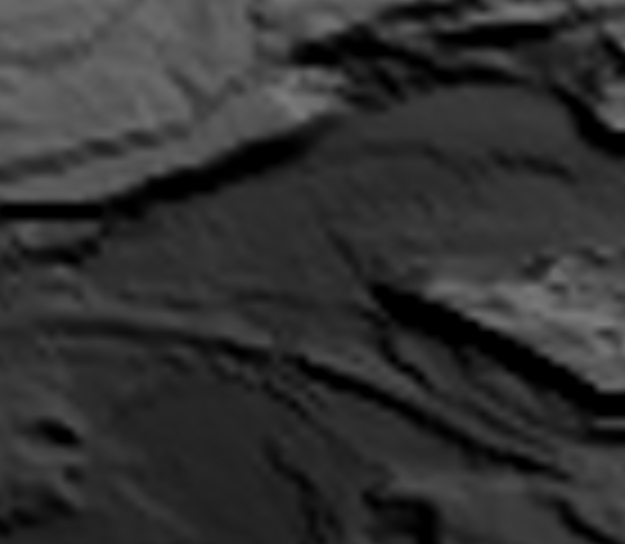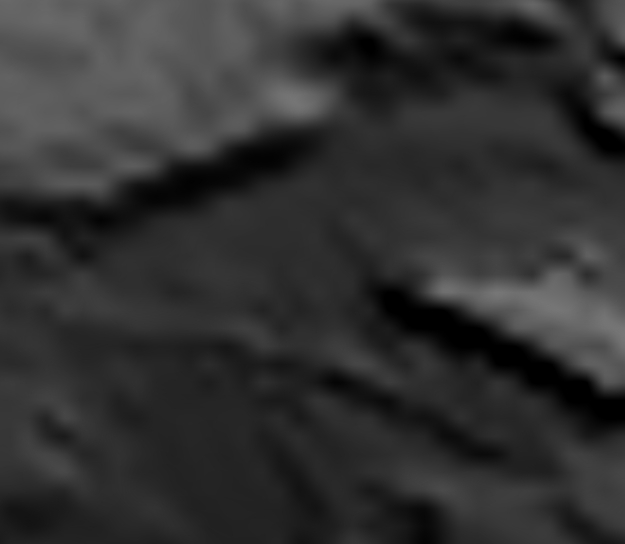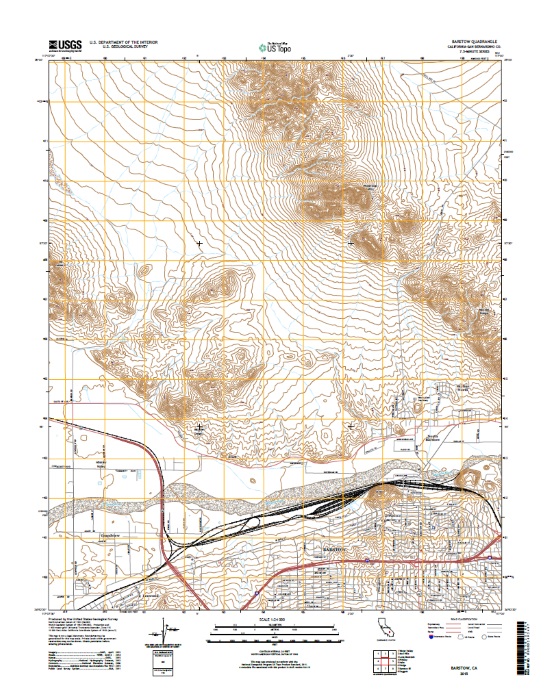Filters: Tags: us (X) > Types: Map Service (X) > Types: Citation (X)
23 results (9ms)|
Filters
Date Range
Extensions
Types
Contacts
Categories Tag Types
|
This file represents the final version of an assessment of the extent, condition, and distribution of grassland types in Arizona as indicated by expert interviews and field verification. Coverage includes the state of Arizona, Southwestern portions of the state of New Mexico, and the Northern portion of Sonora, Mexico.
Categories: Publication;
Types: Citation,
Map Service,
OGC WFS Layer,
OGC WMS Layer,
OGC WMS Service;
Tags: English,
GIS,
Madrean,
US,
assessment,
The Desert Renewable Energy Conservation Plan (DRECP), a major component of California's renewable energy planning efforts, will help provide effective protection and conservation of desert ecosystems while allowing for the appropriate development of renewable energy projects. The DRECP is focused on the desert regions and adjacent lands of seven California counties - Imperial, Inyo, Kern, Los Angeles, Riverside, San Bernardino, and San Diego. It is being prepared through an unprecedented collaborative effort between the California Energy Commission, California Department of Fish and Wildlife, the U.S. Bureau of Land Management, and the U.S. Fish and Wildlife Service also known as the Renewable Energy Action Team....
Categories: Publication;
Types: Citation,
Map Service,
OGC WFS Layer,
OGC WMS Layer,
OGC WMS Service;
Tags: English,
GIS,
OHV,
US,
bird,
Natural landscapes in the Southwestern United States are changing. In recent decades, rising temperatures and drought have led to drier conditions, contributed to large-scale ecological impacts, and affected many plant and animal species across the region. The current and future trajectory of climate change underscores the need for managers and conservation professionals to understand the impacts of these patterns on natural resources. In this regional assessment of the Southwest Climate Change Initiative, we evaluate changes in annual average temperatures from 1951–2006 across major habitats and large watersheds and compare these changes to the number of species of conservation concern that are found within these...
Categories: Publication;
Types: Citation,
Map Service,
OGC WFS Layer,
OGC WMS Layer,
OGC WMS Service;
Tags: Chihuahuan Desert,
English,
Madrean,
Mojave Desert,
Sonoran Desert,
Web Soil Survey (WSS) provides soil data and information produced by the National Cooperative Soil Survey. It is operated by the USDA Natural Resources Conservation Service (NRCS) and provides access to the largest natural resource information system in the world. NRCS has soil maps and data available online for more than 95 percent of the nation’s counties and anticipates having 100 percent in the near future. The site is updated and maintained online as the single authoritative source of soil survey information. Soil surveys can be used for general farm, local, and wider area planning. Onsite investigation is needed in some cases, such as soil quality assessments and certain conservation and engineering applications....
Categories: Data,
Publication;
Types: Citation,
Map Service,
OGC WFS Layer,
OGC WMS Layer,
OGC WMS Service;
Tags: English,
GIS,
US,
agriculture,
development,
Grasslands of the Sky Islands region once covered over 13 million acres in southeastern Arizona and adjacent portions of New Mexico, Sonora, and Chihuahua. Attempts to evaluate current ecological conditions suggest that approximately two thirds of these remain as intact or restorable grassland habitat. These grasslands provide watershed services such as flood control and aquifer recharge across the region, and continue to support dozens of species of concern. Prioritizing conservation interventions for these remaining grassland blocks has been challenging. Reliable data on condition and conservation value of grasslands in the region have not been systematically summarized. State and national boundaries further complicate...
Categories: Publication;
Types: Citation,
Map Service,
OGC WFS Layer,
OGC WMS Layer,
OGC WMS Service;
Tags: Chihuahuan Desert,
English,
Madrean,
Mexico,
US,
El límite fronterizo entre México y los Estados Unidos actualmente presenta a lo largo del área geográfica barreras (para vehículos y peatones), como medida de seguridad para disminuir la entrada de migrantes indocumentados y estupefacientes. El muro fronterizo ha fragmentado los ecosistemas presentes en la región, pudiendo influir en la pérdida de la conectividad de poblaciones de fauna silvestre entre ambos países. Ante tal situación nuestro objetivo fue identificar las áreas más importantes de conectividad para 19 especies que se distribuyen en la franja fronteriza dentro de los estados de Sonora y Chihuahua y los principales impactos que puede tener la estructura asociada a la frontera. Los sitios de conectividad...
Categories: Publication;
Types: Citation,
Map Service,
OGC WFS Layer,
OGC WMS Layer,
OGC WMS Service;
Tags: Mexico,
Spanish,
US,
border,
connectivity,

This is a tiled collection of the 3D Elevation Program (3DEP) and is 1 arc-second (approximately 30 m) resolution. The elevations in this Digital Elevation Model (DEM) represent the topographic bare-earth surface. The 3DEP data holdings serve as the elevation layer of The National Map, and provide foundational elevation information for earth science studies and mapping applications in the United States. Scientists and resource managers use 3DEP data for hydrologic modeling, resource monitoring, mapping and visualization, and many other applications.. The seamless 1 arc-second DEM layers are derived from diverse source data that are processed to a common coordinate system and unit of vertical measure. These data...
Types: Citation,
Map Service,
OGC WFS Layer,
OGC WMS Layer,
OGC WMS Service;
Tags: 1-Degree DEM,
3D Elevation Program,
3DEP,
Bare Earth,
Cartography,

This is a tiled collection of the 3D Elevation Program (3DEP) and is 2 arc-second (approximately 60 m) resolution covering Alaska. The elevations in this Digital Elevation Model (DEM) represent the topographic bare-earth surface. The 3DEP data holdings serve as the elevation layer of The National Map, and provide foundational elevation information for earth science studies and mapping applications in the United States. Scientists and resource managers use 3DEP data for hydrologic modeling, resource monitoring, mapping and visualization, and many other applications. The seamless 2 arc-second DEM layers are derived from diverse source data that are processed to a common coordinate system and unit of vertical measure....
Types: Citation,
Map Service,
OGC WFS Layer,
OGC WMS Layer,
OGC WMS Service;
Tags: 1-degree DEM,
2 arc-second DEM,
3DEP,
Bare Earth,
Cartography,
Riparian grasslands dominated by big sacaton (Sporobolus wrightii) once covered floodplains across the southwest, but have been reduced to some 5% of their historical extent. Sacaton stands that remain provide key resources for watershed function, wildlife, and livestock—yet may need special management to sustain these benefits. This report describes mapping methods and management recommendations that can be applied to riparian grasslands throughout the region. By examining sacaton grasslands in the Las Cienegas National Conservation Area, this project also refines methods for evaluating ecological condition, and provides managers at this site with detailed maps of both high-quality habitat and restoration needs.
Categories: Publication;
Types: Citation,
Map Service,
OGC WFS Layer,
OGC WMS Layer,
OGC WMS Service;
Tags: English,
Madrean,
US,
agriculture,
assessment,
CropScape is a geospatial data service which offers advanced tools such as interactive visualization, web-based data dissemination and geospatial queries and automated data delivery to systems such as Google Earth.
Categories: Publication;
Types: Citation,
Map Service,
OGC WFS Layer,
OGC WMS Layer,
OGC WMS Service;
Tags: English,
GIS,
US,
agriculture,
inventory,
The areas depicted in this shapefile were derived for an analysis of potential conservation priority areas on Bureau of Land Management (BLM) lands across 11 western states: Arizona, California, Colorado, Idaho, Montana, Nevada, New Mexico, Oregon, Utah, Washington, and Wyoming.
Categories: Publication;
Types: Citation,
Map Service,
OGC WFS Layer,
OGC WMS Layer,
OGC WMS Service;
Tags: English,
GIS,
US,
biodiversity,
climate,

Layers of geospatial data include contours, boundaries, land cover, hydrography, roads, transportation, geographic names, structures, and other selected map features.
The National Hydrography Dataset (NHD) is a feature-based database that interconnects and uniquely identifies the stream segments or reaches that make up the nation's surface water drainage system. NHD data was originally developed at 1:100,000-scale and exists at that scale for the whole country. This high-resolution NHD, generally developed at 1:24,000/1:12,000 scale, adds detail to the original 1:100,000-scale NHD. (Data for Alaska, Puerto Rico and the Virgin Islands was developed at high-resolution, not 1:100,000 scale.) Local resolution NHD is being developed where partners and data exist. The NHD contains reach codes for networked features, flow direction, names, and centerline representations for areal water...
Categories: Data;
Types: ArcGIS REST Map Service,
ArcGIS Service Definition,
Citation,
Downloadable,
Map Service,
OGC WFS Layer,
OGC WMS Layer,
Shapefile;
Tags: Artificial Path,
California (CA),
Canal / Ditch,
FWHydrography,
Hydrography,
NatureServe worked with several federal, state, and NGO partners in the United States and Mexico to conduct a climate change vulnerability assessment of major natural community types found within the Mojave and Sonoran Deserts. The project focused on ten major upland, riparian, and aquatic community types, including pinyon-juniper woodlands, Joshua tree-blackbrush scrub, creosote-bursage scrub, salt desert scrub, Paloverde-mixed cacti scrub, semi-desert grassland, desert riparian and stream, riparian mesquite bosque, and desert springs. This effort piloted a new Habitat Climate Change Vulnerability Index (HCCVI) approach being developed by NatureServe, as a companion to an existing index for species. The project...
Categories: Publication;
Types: Citation,
Map Service,
OGC WFS Layer,
OGC WMS Layer,
OGC WMS Service;
Tags: Arizona,
BMP,
Baja California,
California,
English,
The human footprint map focuses on shrubland ecosystems and combines models of habitat use by synanthropic predators (“top-down” effects) and the risk of invasive plant presence (“bottom-up” effects) to estimate the total influence of human activities. Humans have dramatically altered wildlands in the western United States over the past 100 years by using these lands and the resources they provide. Anthropogenic changes to the landscape, such as urban expansion, construction of roads, power lines, and other networks and land uses necessary to maintain human populations influence the number and kinds of plants and wildlife that remain. We developed the map of the human footprint for the western United States from...
Categories: Publication;
Types: Citation,
Map Service,
OGC WFS Layer,
OGC WMS Layer,
OGC WMS Service;
Tags: English,
GIS,
US,
agriculture,
connectivity,
Temperate lakes may contain both coolwater fish species such as walleye (Sander vitreus) and warmwater species such as largemouth bass (Micropterus salmoides). Recent declines in walleye and increases in largemouth bass populations have raised questions regarding the future trajectories and appropriate management actions for these important species. We developed a thermodynamic model of water temperatures driven by downscaled climate data and lake specific characteristics to estimate daily water temperature profiles for 2148 lakes in Wisconsin, USA under contemporary (1989-2014) and future (2040-2064 and 2065-2089) conditions. We correlated contemporary walleye recruitment success and largemouth bass relative abundance...
Categories: Data;
Types: Citation,
Downloadable,
Map Service,
OGC WFS Layer,
OGC WMS Layer,
Shapefile;
Tags: 007,
012,
Fish,
Northeast CASC,
Rivers, Streams and Lakes,
Several statistical compilations of mining claim activity on Federal land derived from the Bureau of Land Management's LR2000 database have previously been published by the U.S Geological Survey (USGS). The work in the 1990s did not include Arkansas or Florida. None of the previous reports included Alaska because it is stored in a separate database (Alaska Land Information System) and is in a different format. This report includes data for all states for which there are Federal mining claim records, beginning in 1976 and continuing to 2010, except Alaska, which only had data to 2007. The statistics compiled from the databases are counts of the number of active mining claims in a section of land each year from 1976...
Categories: Publication;
Types: Citation,
Map Service,
OGC WFS Layer,
OGC WMS Layer,
OGC WMS Service;
Tags: English,
GIS,
US,
assessment,
map,
The Random Forests multiple-regression tree was used to model climate profiles of 25 biotic communities of the western United States and nine of their constituent species. Analyses of the communities were based on a gridded sample of ca. 140,000 points, while those for the species used presence-absence data from ca. 120,000 locations. Independent variables included 35 simple expressions of temperature and precipitation and their interactions. Classification errors for community models averaged 19%, but the errors were reduced by half when adjusted for misalignment between geographic data sets. Errors of omission for species-specific models approached 0, while errors of commission were less than 9%. Mapped climate...
Categories: Publication;
Types: Citation,
Map Service,
OGC WFS Layer,
OGC WMS Layer,
OGC WMS Service;
Tags: English,
US,
climate,
grassland,
land cover,
The USGS Elevation Contours service from The National Map (TNM) consists of contours generated for the conterminous United States from 1- and 1/3 arc-second elevation data. Small scale contours derived from 1 arc-second data are displayed at scales ranging from 1:577K to 1:72K in The National Map viewer. Contour intervals are 100 foot between 1:577K and 1:144K, and 50 foot at 1:72K. Large scale contours derived from 1/3 arc-second data are displayed at 1:50K (and larger). Large scale contour intervals are variable across the United States depending on complexity of topography. The National Map viewer allows free downloads of public domain contour data in either Esri File Geodatabase or Shapefile formats. The 3D...
Categories: Data;
Types: ArcGIS REST Map Service,
Citation,
Map Service;
Tags: Elevation,
Elevation,
NGP-TNM,
Overlay Map Service,
REST,
Climate change has been shown to influence lake temperatures globally. To better understand the diversity of lake responses to climate change and give managers tools to manage individual lakes, we modelled daily water temperature profiles for 10,774 lakes in Michigan, Minnesota and Wisconsin for contemporary (1979-2015) and future (2020-2040 and 2080-2100) time periods with climate models based on the Representative Concentration Pathway 8.5, the worst-case emission scenario. From simulated temperatures, we derived commonly used, ecologically relevant annual metrics of thermal conditions for each lake. We included all available supporting metadata including satellite and in-situ observations of water clarity, maximum...
Categories: Data;
Types: Citation,
Downloadable,
Map Service,
OGC WFS Layer,
OGC WMS Layer,
Shapefile;
Tags: 007,
012,
Fish,
IA,
IL,
|

|